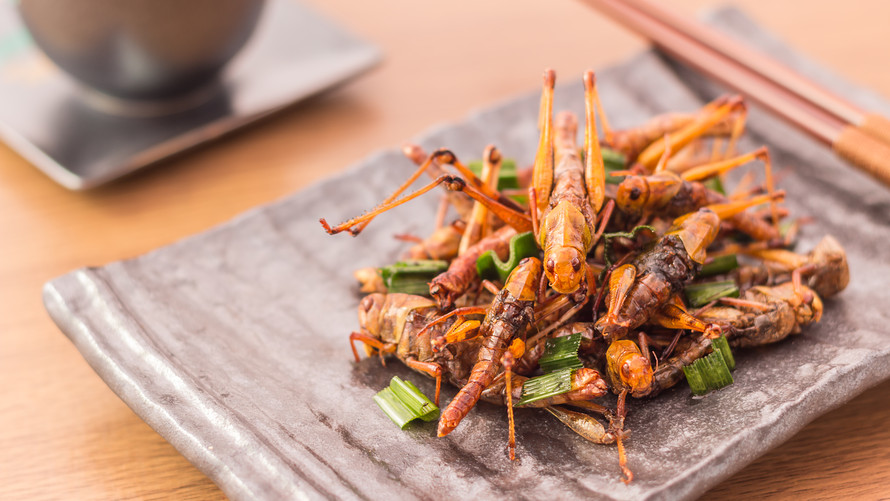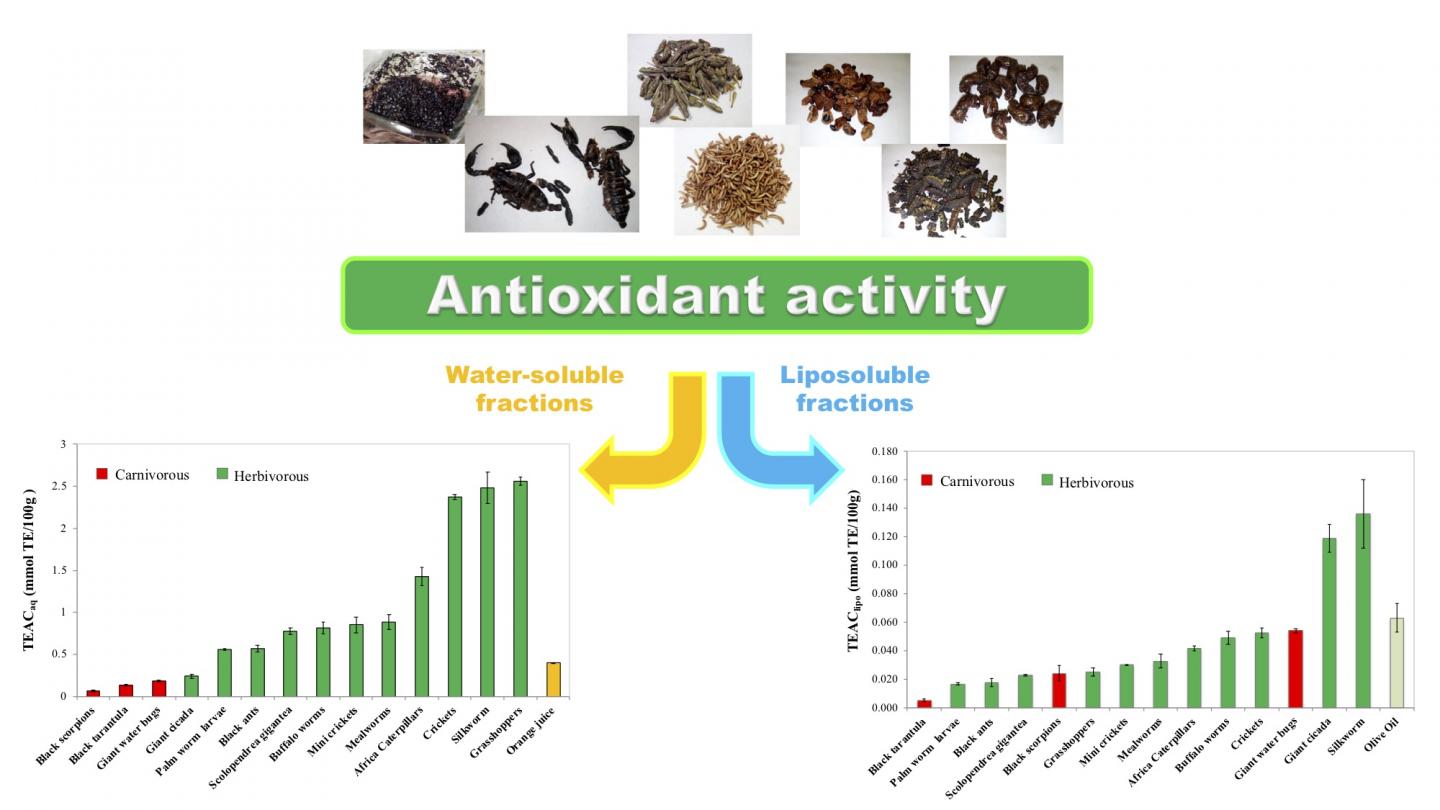Orange juice, kale, acai berries… and bugs?
Turns out, edible insects like grasshoppers, crickets and silkworms are rich sources of antioxidants — packing five times more antioxidants than fresh orange juice, according to a new study published in Frontiers in Nutrition.
Though a quarter of the world’s population — or about 2 billion people — regularly eat insects, many Americans remain squeamish about swallowing bugs. The author of the study says its findings could be one way to entice health-conscious consumers to bite: in other words, by billing these critters as six-legged superfoods.
“Edible insects are an excellent source of protein, polyunsaturated fatty acids, minerals, vitamins and fiber. But until now, nobody had compared them with classical functional foods such as olive oil or orange juice in terms of antioxidant activity,” wrote University of Teramo, Italy professor Mauro Serfani in his report on the study.
Insects have not been a part of mainstream American cuisine, but tastes could be changing. A recent study found that more than eight in 10 Americans (82%) would consider trying edible insects, at any rate. And bugs have started crawling onto some U.S. restaurant menus, particularly those serving cuisines in which bugs are more common ingredients. Some bugs can be found at speciality grocers in the form of dried crickets, winged weaver ants and gourmet worm salt, not to mention as protein powder for shakes and smoothies.
Related: Eating bugs is good for the environment, the economy — and even your waistline
Sefani’s team tested a range of edible insects and invertebrates commercially available in supermarkets and on websites, removing the wings and stings that can’t be consumed, and then grinding the rest of the organisms into two extracts: the fat, and a powder that could be dissolved in water. Both extracts were tested for antioxidant capacity.
The critters included the aforementioned crickets, grasshoppers and silkworms; giant cicadas, giant water bugs and black ants; as well as black tarantulas and black scorpions (which are technically arachnids, not insects); and African caterpillars, mealworms, buffalo worms, palm worms and scolopendra (large centipedes.)
 stockphototrends/iStock
stockphototrends/iStock
The researchers then used the same process to test fresh orange juice and olive oil, which are well-known sources of antioxidants. (Antioxidants, often found in fruits and vegetables, are vital for helping to prevent cardiovascular disease, diabetes and cancer.)
The result? The water-soluble extracts from the grasshoppers, crickets and silkworms had five times the antioxidant capacity of fresh orange juice. In fact, most of the tested insects and invertebrates had some level of antioxidant capacity higher than the OJ, except for the cicadas, water bugs, tarantulas and scorpions.
The results of the fat extracts were also promising. The fat from the giant cicadas and the silkworms showed twice the antioxidant activity of olive oil.
Serfani concluded that certain edible insects, like the crickets, grasshoppers and silkworms, are a rich source of antioxidants. “In the future, we might also adapt dietary regimens for insect rearing in order to increase their antioxidant content for animal or human consumption,” he wrote.
 Frontiers in Nutrition
Frontiers in Nutrition
This insect idea might be getting less hard for the general public to swallow. After all, alternative meat patties from Beyond Meat BYND, -1.71% and Impossible Foods have popped up in Whole Foods AMZN, -0.89% and Burger King QSR, +1.00% and even Nestle NSRGY, +1.32% has announced it will roll out plant-based burgers earlier this year.
Related: The July Fourth Weekend vegan barbecue from hell: Fly-larvae hot dogs and locust ice cream
Some academics have warned the world’s growing population may eventually be forced to buy into it. The University of Queensland has said that the livestock industry can’t continue to meet the global demand for meat; and the United Nation’s Food and Agriculture Organization has also warned that with the global population expected to hit 9 billion people by 2050, the only way we’ll be able to feed everyone is by eating bugs. At any time, it is estimated that there are some 10 quintillion (10,000,000,000,000,000,000) individual insects alive on the planet.
The edible insect market is expected to exceed $165 million by 2023 in the U.S. alone, with some international sites like GMI Insights predicting it to hit more than $523 million globally by 2023.










Add Comment